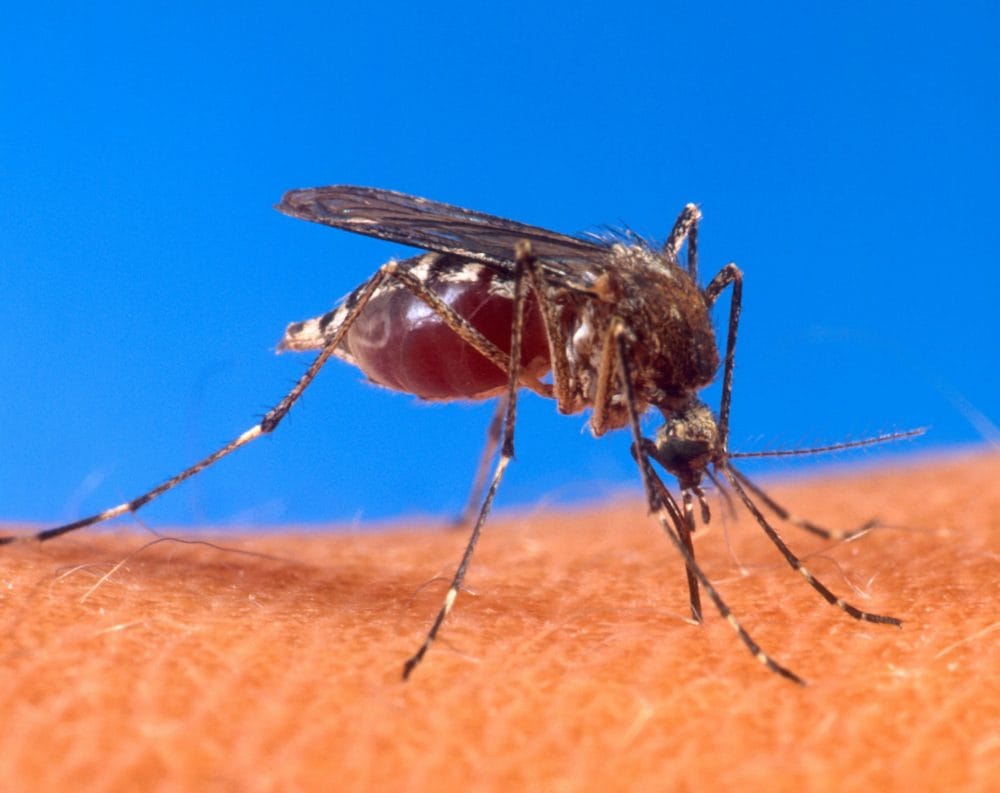
Article by Lalita Panicker, Consulting Editor, Views and Editor, Insight, Hindustan Times, New Delhi
A single dose of an experimental antibody drug protects children from malaria for up to 6 months, according to a clinical study published today in The New England Journal of Medicine. www.science.org/content/article/injectable-antibody-drug-protects-children-malaria-mali-trial?
The therapy, an injectable monoclonal antibody called L9LS that has already shown success in adults, reduced infections and clinical disease in 6- to 10-year-olds in Mali. Although the drug is still undergoing clinical testing, the results suggest monoclonal antibodies could be an important addition to the arsenal against this deadly disease, researchers say.
Malaria caused an estimated 608,000 deaths in 2022, about three-quarters of them among African children under 5 years old. There are various strategies to try to stall the mosquito-borne disease, including insecticide-treated bed nets, vaccination—which got its first large-scale rollout in Cameroon this year and is now part of childhood immunization programs in eight African countries—and preventative treatment with antimalarial drugs. However, no approach is 100% effective and all carry practical limitations. Some antimalarials, for example, have to be taken for several days each month to be protective.
Monoclonal antibodies, which can stop pathogens invading cells by binding to proteins on their surface, offer another approach, says Peter Crompton, a malaria researcher with the U.S. National Institute of Allergy and Infectious Diseases. In 2022, he and his colleagues reported that one dose of a lab-produced antibody called CIS43LS protected adults from infection throughout Mali’s high malaria season, which runs from July through December. That drug was cumbersome to deliver, having to be infused directly into a person’s bloodstream over about half an hour. So the team developed L9LS, a different, injectable antibody that also protected adults from infection in a small clinical trial.
In the new study, Crompton and colleagues first tested the antibody’s safety on a small group of children and adults. Then, they gave more than 200 children in the Koulikoro region of southwest Mali a high L9LS dose, a low L9LS dose, or a placebo. Over the next 24 weeks, participants were monitored with regular finger-prick tests to look for infection with the malaria parasite Plasmodium falciparum, and given general health check-ups to detect the disease and treat it, if needed.
Infection rates were high across all groups. However, whereas 81% of children who received placebo got the parasite during those 24 weeks, only 48% of the low-dose and 40% of the high-dose children became infected. Smaller numbers in each group developed the actual disease. Using a statistical analysis that compares the time between antibody injection and malaria infection across groups, the team calculated that the high dose of L9LS was 70% efficacious at preventing infection and 77% efficacious at stopping disease. The low dose was a little more than 65% efficacious in both cases.
“We’re really happy with these results, both in terms of efficacy and in terms of safety,” says study co-author Kassoum Kayentao of the University of Sciences, Techniques and Technologies of Bamako. The findings suggest a single dose of monoclonal antibody could replace monthly antimalarial medication programs in places like Mali, he adds.Top of Form
The researchers could also examine L9LS’s effects in areas where malaria rates aren’t quite so high, or in countries such as Gambia where the disease is on the path to being eliminated, says Umberto D’Alessandro, a clinical epidemiologist at the London School of Hygiene & Tropical Medicine and director of the Medical Research Council Unit, The Gambia.
He and others emphasize that L9LS must clear multiple hurdles before it can be widely used. In addition to conducting more safety and efficacy studies, the team will have to establish the correct dosing regimen, says Mwayiwawo Madanitsa, a clinical epidemiologist at the Malawi University of Science and Technology. They’ll also need to assess the feasibility and cost-effectiveness of rolling the drug out on a large scale.
Although the exact cost isn’t yet clear, Crompton says L9LS manufacture could end up at about $50 per gram, giving a single low dose a price tag of about $8. That’s competitive with the cost of treating a child with monthly antimalarial drugs, which comes to about $5 per year, he says, adding that more potent antibodies developed in the future could help make the approach more economically viable.
For now, the researchers are testing L9LS in two further studies: one in Kenya focusing on children between 5 months and 5 years old, and another in Mali among women of childbearing age, in preparation for trials among pregnant people.
Crompton says the team is also planning a trial in infants as young as 4 weeks. Vaccination is only recommended for children 5 months and older, he notes, so perhaps L9LS could help protect kids during the vulnerable first months of their lives.
///
Benin, Liberia and Sierra Leone launched large-scale malaria vaccine programmes on Thursday under an Africa-focused initiative that hopes to save tens of thousands of children’s lives per year across the continent. www.reuters.com/world/africa/west-africas-benin-liberia-sierra-leone-launch-malaria-vaccination-2024-04-25/?
The three West African countries are the latest to participate after successful rollouts of routine malaria immunization for children in Burkina Faso, Cameroon, Ghana, Kenya and Malawi, the global vaccine alliance, GAVI said in a statement.
The World Health Organization-approved vaccine is meant to work alongside existing tools such as bed nets to combat malaria, which in Africa kills nearly half a million children under the age of 5 each year.
“This introduction … will help save lives and offer relief to families, communities and hard-pressed health systems,” said Aurelia Nguyen, GAVI chief programme officer.
Benin has 215,900 doses of the vaccine, which will be available to children from around 5 months old, according to GAVI.
Sierra Leone has 550,000 doses and neighbouring Liberia has 112,000 doses, it said.
At the official launch in Benin, which took place in the town of Allada, some 54 km (34 miles) from the country’s largest city, Cotonou, 25 children received the vaccine.
The global fight against malaria took a stride forward on in January this year as Cameroon started the world’s first routine vaccine programme against the mosquito-borne disease.
Around 40 years in the making, the World Health Organization (WHO)-approved RTS,S vaccine developed by British drugmaker GSK is meant to work alongside existing tools such as bed nets to combat malaria, which in Africa kills nearly half a million children under the age of five each year.
After successful trials, including in Ghana and Kenya, Cameroon became the first country to administer doses through a routine programme that 19 other countries aimed to roll out this year, according to global vaccine alliance Gavi.
About 6.6 million children in these countries are targeted for malaria vaccination through 2024-25.
The African region is home to 11 countries that carry approximately 70% of the global burden of malaria, according to GAVI.
////
Researchers have discovered a new avenue by which viruses may spread from bats to other mammals: In bat guano eaten by chimpanzees and other animals. The scientists were observing chimps in Uganda’s Budongo Forest Reserve in 2017 when some scooped dry bat faeces from under a hollow tree and devoured it—the first time this behaviour was observed in any mammal. (The scientists later also saw monkeys and antelopes snacking on the droppings.) www.science.org/content/article/news-glance-plants-tree-life-conserving-u-s-federal-lands-and-entertaining-invertebrate
Guano consumption may be a response to dietary mineral scarcity and may expose wildlife to bat-borne viruses. Videos from 2017–2019 recorded 839 instances of guano consumption by the aforementioned species. Nutritional analysis of the guano revealed high concentrations of sodium, potassium, magnesium and phosphorus. Metagenomic analyses of the guano identified 27 eukaryotic viruses, including a novel beta-coronavirus.
Spill-over of viruses from wildlife to humans is often thought to be preceded by viral transmission and amplification among wildlife. For example, human ebolavirus outbreaks in Africa follow sylvatic transmission cycles in non-human primates and ungulates, with humans likely becoming infected through contact with carcasses. Similarly, epidemiological data and analyses of inferred viral genomic recombination suggest that approximately half of human-infecting coronaviruses underwent transmission from wildlife reservoirs to humans through intermediary hosts. Despite the high social and economic costs of zoonoses, the mechanisms underlying such antecedent virus transmission within animals remain poorly understood.
The guano contained dozens of previously unknown viruses, including a new coronavirus, a relative of the SARS-CoV-2 virus that causes COVID-19, the research team reports this week in Communications Biology. They don’t know whether the animals became sick. Many deadly viruses that infect animals and can jump to humans, including Ebola, Marburg, and SARS-CoV-2, are thought to originate in bats.
////
Using a new approach to vaccine development, researchers may have come up with a potential solution to the problem of antibiotic-resistant bacteria.
Their experimental vaccine provided mice with high levels of immunity from lethal levels of Staphylococcus aureus and its “superbug” form methicillin-resistant S. aureus, or MRSA, researchers reported last Wednesday in Nature Communications.
Overuse of antibiotics has helped lead to the evolution of superbugs resistant to most commonly available treatments. New antibiotics or other solutions are badly needed, health experts say.
To develop a vaccine, researchers must identify a molecule that the body will flag as foreign. These molecules, or antigens, trigger the immune system to create antibodies to fight future infection.
While most vaccines rely on protein antigens, the new vaccine uses a carbohydrate called polysaccharide poly-beta-(1−6)-N-acetylglucosamine, or PNAG, which is present on the cell wall of many bacteria.
The scientists were able to identify 32 PNAG carbohydrates, all comprised of five sugars but with differing patterns of certain molecular components that are either bound to another small molecule called an acetyl group, or that are not bound to anything else.
The team found two PNAG versions that were especially promising and attached them to a virus that infects bacteria.
Coupled with the virus, the two PNAG combos provided mice with “near complete protection” against infections by S. aureus and MRSA, with minimal impact on the healthy organisms that live in the intestines, the researchers said.
The widespread presence of PNAG in multiple bacteria “render it an attractive target for vaccine development,” they added.


